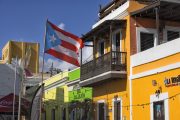Exasperated at failed attempts by the Mexican government to neutralize the drug cartel that virtually owns the Michoacán state and especially its principal city, Apatzingán, farmers and lime growers and other citizens are banding together into fuerzas autodefensas — self-defense forces — to accomplish the task. Recruiting for those forces has accelerated thanks to the attacks by the cartel, called the Caballeros Templarios (the Knights Templar), which torched half a dozen service stations and a power plant in Apatzingán in late October and kidnapped, tortured, and murdered the mayor of Santa Ana Maya two weeks later.
The tipping point for each member of the self-defense forces — now numbering in the dozens in towns in the southwest corner of Mexico, whose membership has soared into the thousands — was different. Hipolito Mora, a lime grower, joined when a packing company controlled by the cartel would not buy his fruit after he refused extortion demands to pay 10 percent of his revenues to the cartel. For Miguel Patino Velaquez, it was the sight of others in his town taking up arms and joining forces to fight the cartel. For Leticia, a lime picker, her revelation came when she and her two children witnessed the kidnapping of a taxi driver by the cartel in broad daylight with nary a policeman in sight. Leticia told an Associated Press reporter: “We live in bondage. [The cartel] treats people like animals.”
The Knights Templar, the third largest drug cartel in Mexico, is an outgrowth of the La Familia cartel that was emasculated by government raids in the summer of 2011. It is headed up by Servando Gómez Martínez, who has been indicted in the United States for conspiring to import cocaine and methamphetamine from Mexico and distribute it throughout the United States. His strong-arm tactics in Apatzingán include extortion, terrorism, kidnapping, and murder. His cartel has so intimidated government officials that few have dared to speak out against it. That’s what cost Santa Ana Maya’s Mayor Ygnacio Lopez Mendoza his life. Just weeks before his murder, Mendoza tweeted how the cartel extorted small business owners: “For every building work, we have to pay the Knights Templar 10%. All of us, Michoacán mayors, have this problem.” He added, “The insecurity … is something that everybody in the world knows, but no one talks about. Why? Because we have to deal with organized crime — we have to pay them.”
Just days later his mutilated corpse was found in the front seat of his car.
The head of the self-defense group in Tepalcatepec is José Manuel Mireles, who is already seeing some success against the cartel. Six municipalities in the Michoacán state are now free of the cartel’s influence to the point that Mexico’s Attorney General Murillo Karam met with Mireles to ask how they could help. Following that meeting, military forces entered the port city of Lázaro Cárdenas, which the cartel was using as a major distribution center for drugs and precursor chemicals for meth, and bused 40 local police officers to Mexico City for questioning about their ties to the cartel. On Thursday, November 7, military forces arrested the entire 25-member police force of Vista Hermosa, in northern Michoacán, on suspicion of colluding with the cartel.
The angry citizens have grown from a few hundred to several thousand, and have amplified their meager defenses with AK-47s and armored vehicles and SUVs captured in successful raids on the cartel.
The Knights Templar is still very much in charge, especially in Apatzingán, considered the cartel’s headquarters. But on the fringes of the city, and in the surrounding areas in the state of Michoacán, progress is being made as citizens are succeeding in reestablishing the rule of local law in some places. Other towns, however, have been so corrupted by the cartel that often the fuerzas autodefensas find themselves fighting not only the Knights Templar, but their infiltrators and turncoats in the police departments and the governments themselves.
The rule of law works only where it is respected and upheld. Where it isn’t, the defense forces find there is little they can do. As Mexican security analyst Jorge Chabat noted:
[Mexican] presidents change, but the problems of violence and insecurity are still there. These are structural issues that are the result of government failure. And they will be very difficult to fix.
Photo of villagers belonging to the self-defense force in Michoacán, Mexico: AP Images
A graduate of Cornell University and a former investment advisor, Bob is a regular contributor to The New American magazine and blogs frequently at www.LightFromTheRight.com, primarily on economics and politics. He can be reached at [email protected]




